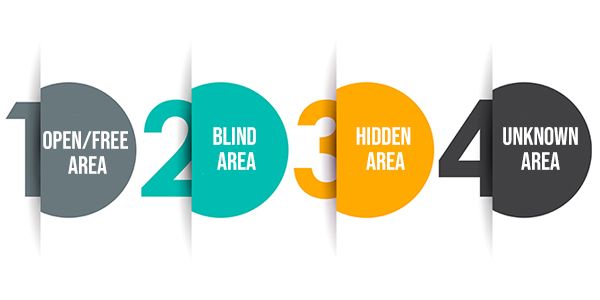
A Psychology Tool for the High Performing Business Consultant
As we know, the Johari window was created by leading psychologists in 1955 as a technique to help people develop a better grip on their relationships with themselves and others.
The concept is simple and intuitive & this article attempts at narrating the view through the eyes of a high performing project Business Analyst/Consultant. The author is inspired by the overarching Blue Ocean Strategy Philosophy of applying learnings from across domains to create unique perspectives; in this instance a classic psychology tool is taken up in fresh Business analysis & consulting domain.
The objective is to trigger unprecedented research and appreciation that can be developed to a powerful perspective tool in the leadership journey of a consulting practitioner. At the least the view will help develop a constructive & compassionate perspective to acknowledge the known and an appreciative curiosity to respect the unknown!
The Johari Kaleidoscope opens to four dimensions:-
- Area1:Aspects known to both BA/Project and the World (PUBLIC/KNOWN)
- Area2: Aspects known to stakeholders/world but unknown to BA/project (BLIND)
- Area3:Aspects known to BA/project but unknown to stakeholders/world (HIDDEN)
- Area4:Aspects unknown to both BA/project and stakeholders/world (UNKNOWN UNKNOWNS)
It is worthwhile to note that this view, like that through a Kaleidoscope, constantly changes with requirements shifting between the four quadrants throughout the life cycle of the project! At times it is the Business consultant/analyst’s conscious attempts that shift the quadrants (e.g. a robust stakeholder interview unravels an unstated need and moves it from quadrant 2 to 1!) & sometimes the shift happens through factors beyond the control of project/BA. (E.g. /project decides to drop a requirement but it is yet to be socialised with key stakeholder, a shift from quadrant 1 to hidden quadrant 3)
Let us now dive deeper into interesting insights derived out of the four quadrants,
Quadrant 1: PUBLIC/KNOWN
Quadrant 1 is the “visible to all “quadrant containing entities–that are freely and openly available for verification to the project as well its stakeholders. It is expected that this quadrant will manage 80-90% of requirements in the peak phase. In other words, this quadrant initially exposes just a bit of the whole truth to the curious BA! A Business Consultant starts the journey of acknowledging the knowns and appreciating the unknowns at this juncture.
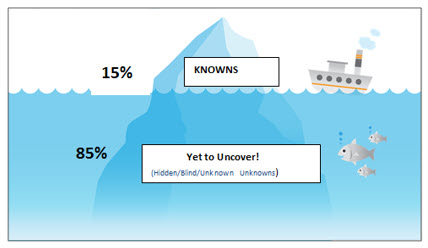
Diagram1
While this may sound the easiest quadrant of requirements for a Consultant to deal with, the quadrant poses its own unique challenges/expectations:-
- Alignment: These “knowns” can be leveraged to seek the much required Alignment early on in the project. Often these are the “ice-breakers” that can precede critical requirement elicitation. As the information is readily known and easily verifiable – it is absolutely essential that the Business Consultant focuses on the accuracy and coverage. This is the quadrant of quick wins with accompanying celebrations and trust building – if all goes right. But all the same is one of quick disasters if the obvious is ignored. ! The Business Consultant makes a strong head start into his journey of exploration leveraging the consensus around quadrant1 aspects.
- Trust Build: This is the quadrant of leverage to build trust. In communication around requirements, Business Consultant could use this quadrant to reiterate the knowns and build a strong foundation of trust As most people don’t like surprises a diligent Business Consultant would ensure items are prioritised such that elements of Quadrant 1 form the glue that is required to bind conversations together.
- High Cost of Failure: This quadrant has the highest cost of failure in my view as these requirements form the very basis of constructing a robust business requirement pyramid. A failure at this layer could cascade to gross lack of trust and resentment from stakeholders and ultimately affect the downfall of the entire pyramid of trust.
Area 2: BLIND
In my view this is the “thinking” quadrant for the consultant! This quadrant has aspects not known to the consultant//project but known to the world/stakeholders. During structured and unstructured elicitation, the Business Consultant has to uncover these unstated requirements and shift them to quadrant 1 to manage them effectively. Fortunately there are tools and techniques available to help deal with this:-
- Appreciative Inquiry
This is a technique widely used in Organisation research consulting paradigms, and in my view, a perfect tool for a Business Consultant to unravel facts and requirements, not so apparent to the naked eye! In short terms Appreciative Inquiry or better known as “AI”, is to weave in conversations that focus on strengths ( not weakness) and possibility thinking( not problem thinking) that travels through the 4-D cycle – Discover, Dream, Design and Destiny. The key trait in this approach is consultative collaboration and imaginative exploration that helps shift the aspects yet unknown to the Business Consultant from quadrant 2 towards more manageable quadrant1.
- Collaborative Games & Business Model Canvasing(BMC)
[(Introduced in BABOK V3 along with other 15 new techniques]
Collaborative game is a technique inspired by game play for the adept facilitator BA, as part of the elicitation activity, to collaborate in building a joint understanding of a problem or a solution. The BMC is a visual depiction of enterprise value creation (how value is created, delivered and captured). A combination of these two techniques could help the enterprise Business Consultant to accentuate the spirit of consultation, collaboration and co-creation required to uncover treasures (aka requirements, facts) in other quadrants(quadrants 2,3 and 4) and shift to quadrant 1 and baseline .
These Techniques present favourable group dynamics whereby astute consultant extracts information by opening hitherto closed mind doors (Elicitation) and also dig within and reveal information of interest to the stakeholders (Excavation). Together the group explores aspects yet unknown to both project and stakeholders and discovers items to be shifted to quadrant 1. (Exploration). Once the requirements /facts are brought over to quadrant 1 the Business Consultant establishes alignment and baseline such information. (Establish)
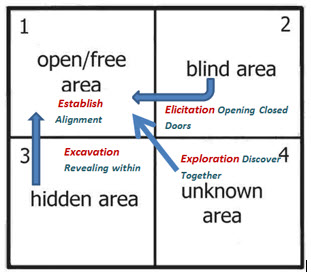
Diagram2 Note: Above 4E- model (Elicitation, Excavation, Exploration and Establish) is purely author’s hypothesis framework built over Johari window and not traced to any available research. Interested researchers feel free to extend my framework; appreciate siting this original article reference though.
These techniques are applicable to below quadrants as well. At the end of an engaging workshop deploying such techniques it is not unusual that quadrants 2/3/4 shrink as the outlets depicted above floods qudrant1
Area 3: HIDDEN
Quadrant 3 is the “Challenge “quadrant in many aspects. This quadrant contains information /requirements (stated/unstated), risks, challenges, assumptions etc. known to the consultant/project but not yet revealed to the world/stakeholders deliberately or unknowingly. The “Challenge” comes from the extreme demand of Mindfulness and Integrity from Business Consultant to differentiate between the two scenarios and act accordingly. While project confidential or trivial information need not be released to wider audience, a crucial decision regarding a stakeholder requirement could be inadvertently held back!
As an example consider project prioritisation of elicited requirements from various stakeholders. A requirement from a stakeholder group has been down prioritised and might not be met. This decision has not been communicated to the stakeholder group timely through proper re-engagement. This “hidden” project decision could be catastrophic down the line for the project to meet timely deliverable sign-offs & quality acceptance criteria.
While Organizational culture and working atmosphere is of utmost significance to create a culture of “shared wisdom ” – a Business consultant’s proactive leadership can reduce the pile of information /requirement/risks that are wrongly kept in quadrant 3 & must be shifted to quadrant 1 for wider audience reference. A Business Consultant can assist the project in reducing such “incongruence” and help “breaking bad news at right time in proper manner” to audience through various techniques and behaviours. The example below touches upon the example covered in previous paragraph.
- Balance Scorecard[ New technique introduced in BABOK V3] to communicate context around “Why a requirement was down prioritised/dropped”
As depicted in Diagram2 the purpose of the shift from Quadrant 3 to Quadrant 1 is to Establish Alignment.
The Balance Score Card (originated by Robert Kaplan and David Norton), in my view, is the perfect tool for depicting the broader context and balance considerations under which the requirement has been down prioritised. Based on the project context the standard Score card parameters can be tweaked to communicate Key project vision, goals and requirement prioritisation dimensions. The standard BSC dimensions are as below:-
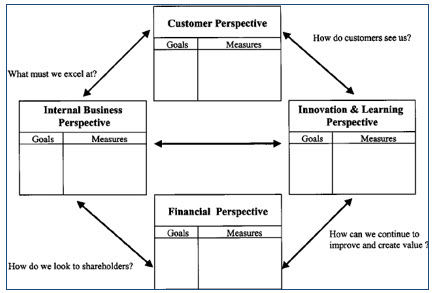
- The SPIKE Protocol (to break “bad news”)
As a Blue ocean strategy practitioner, I am committed to looking at protocols and frameworks from unexpected sectors of the world that bring fresh perspectives to Business analysis consulting paradigm!
The SPIKE protocol, as you know, is used by clinical practitioners (e.g. Cancer Australia) – to disclose a bad news to the patient regarding their medical condition. The first reason the protocol is referred is it’s through structured patient“(in our case stakeholder) centric approach. The other compelling reason is the extreme learning aspect .When it comes to braking bad news, it doesn’t get more complex/stressful than the situation where a medical practitioner (in our case the consultant) has to disclose extreme information to a patient in distress (in our case the stakeholder whose requirement has been dropped). The analogy used is – If you learn how to climb the Himalayas, there is a fair chance you are well equipped to climb any other mountain in the world.
Let us look at how the SPIKE protocol can be interpreted to meet the management Consultant perspective & map into a few of the underlying competencies mentioned in BABOK V3:-
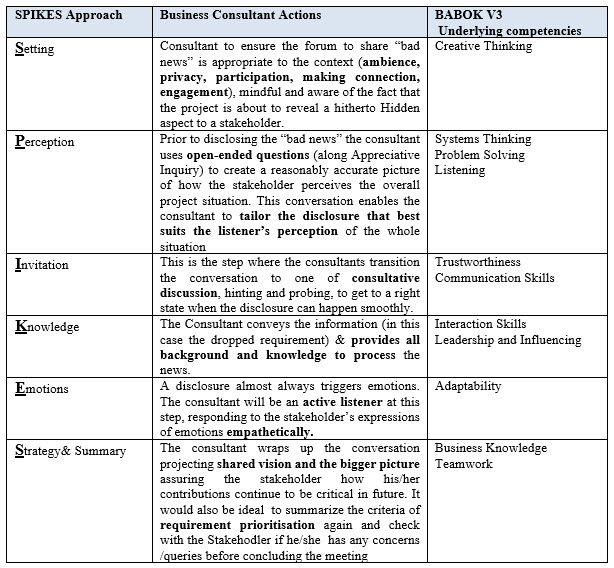
Area 4: HIDDEN
Quadrant 4 is the “Mystery “quadrant and hence the Quadrant of “Exploration” and “Innovation”. Research shows less than 10% of projects tap into this quadrant effectively through the life cycle of the project for various reasons! One major reason is the lack of acknowledgement of the very fact that such a quadrant exists; i.e. there is no conscious effort from project or stakeholders to look beyond the obvious and they often end up scrambling repeatedly over the knowns. But for the brave few who venture out on the exploration, challenging the “stated” and “statuesque “ – invaluable treasures await! – such critical information that could make the difference between a good launch with a few glitches & average customer experience vs a great implementation with zero defects and 100% customer satisfaction! . This is the quadrant to challenge the knowns and statuesque to breakthrough to innovative paradigm shift information!
A few consulting tools and techniques that I have come across aiding this collaborative ‘exploration “is listed below (in addition to the”Collaborativee games” & BMC (Business Model Canvasing) listed in previous section):-
- Value Chain Analysis
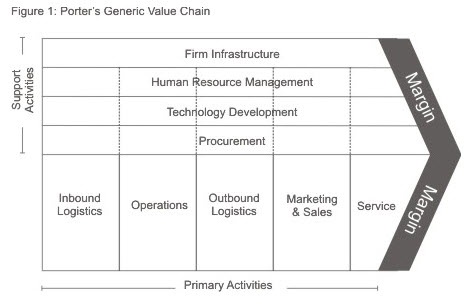
Example provided here is classic Porter’s model. Any value chain analysis is aimed at appreciating the scope of the project in the context of overall Organisational value levers and dependencies. It is often found that such an end-end view based deliberation results in fresh perspectives that ultimately unravel crucial dependencies or information enriching the requirements.
- Design Thinking
As we know the term emerged at Stanford in the 1980s, as a way to characterize the broad approach taken toward problem solving. This user centric approach, originating in the world of design, embraces visual thinking. Design thinking can be applied to the world of business consulting, along with stakeholders, to solve problems in processes, business models and strategy. The key idea here is to push the thinking beyond the comfort zones and invent and imagine customer experiences /requirements from Quadrant 4 and move to them to reality in quadrant 1. The Design Thinking stages are:-
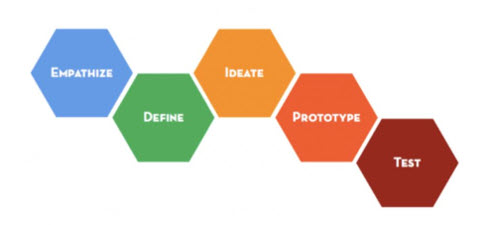
Note: Above model is attributed to Tim Brown (CEO and president of IDEO)
뉴토끼
… [Trackback]
[…] Information on that Topic: batimes.com/articles/a-psychology-tool-for-the-high-performing-business-consultant/ […]